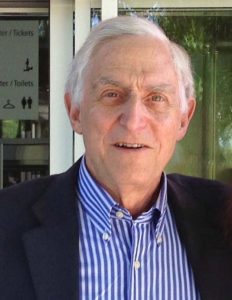In this series, Education Specialist for Public Programs Emily Bray profiles volunteers within the museum. Phillips volunteers are an integral part of the museum and help in many ways: greeting and guiding guests through the museum, helping with Sunday Concerts, assisting patrons in the library, helping out with Phillips after 5 and special events, and so much more. Our volunteers offer a wealth of expertise and experience to the museum, and we are delighted to highlight several them.
Stanley C. Foster, Art Information Volunteer

Stanley C. Foster
What year did you start volunteering at The Phillips Collection?
Stanley Foster: 2015
What do you see as the most valuable aspect of your volunteering?
SF: Interacting with the public. Providing them with an overview of the museum and the artworks and Duncan Phillips’s vision. Also discovering interesting information about the visitors, including where they come from and what attracted them to the Phillips.
What do you do when you are not volunteering at The Philips Collection?
SF: I volunteer as a tour guide at the Kennedy Center. I also audit an undergraduate courses at Georgetown University with my wife.
What is your favorite room or painting at the Phillips?
SF: Difficult question since it depends on the day and the weather.
If you had to choose one word to describe Phillips, what would it be?
SF: Intimate.
Share a fun fact about you!
SF: I graduated from the same magnet high school in Philadelphia, Central High School, that John Sloan, William Glackens, Thomas Eakins, and Alfred Barnes attended. Sloan, Glackens, and Barnes were at Central High at the same time in the 1890s. Eakins had graduated earlier. Sloan and Glackens became a part of the Ashcan School, an artistic movement in New York City in the early 1900s depicting ordinary life. Barnes founded the Barnes Foundation, a private museum in Philadelphia, and was a collector competing with Duncan Phillips. As a senior at Central High, I wrote an article for the school magazine, The Mirror, about Sloan, Glackens, and the Ashcan School. It was nostalgic for me to see Sloan’s The Wake of the Ferry II and Glackens’s Bathers at Bellport recently hanging in adjoining rooms at The Phillips Collection.

